Docs
Azimuth Identity Provider
How to use the Azimuth Identity Provider
Azimuth provides a Keycloak realm for each tenancy. The Kubernetes application platforms in Azimuth can use this Keycloak to manage access to the platforms by creating new users and adding those users to groups. External identity providers can also be added to the Keycloak realm to provide access. Any created users can be given access to Azimuth platforms, but not Azimuth itself, and not any manually created machines. Not all platforms can be signed into this way.
To access the Identity Provider, go to the Identity Provider tab, and click Open identity provider.

You can now sign in with Azimuth using the button on the bottom, which uses the Azimuth login to sign into Keycloak. Alternatively any created users can sign in with username/email and password.
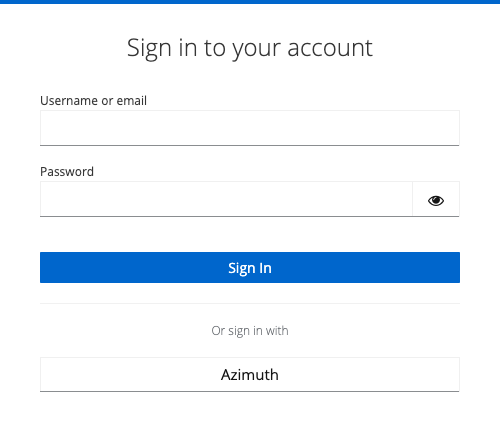
Search, edit or create users in the Users tab on the left hand side. Use Add user to create a new user.
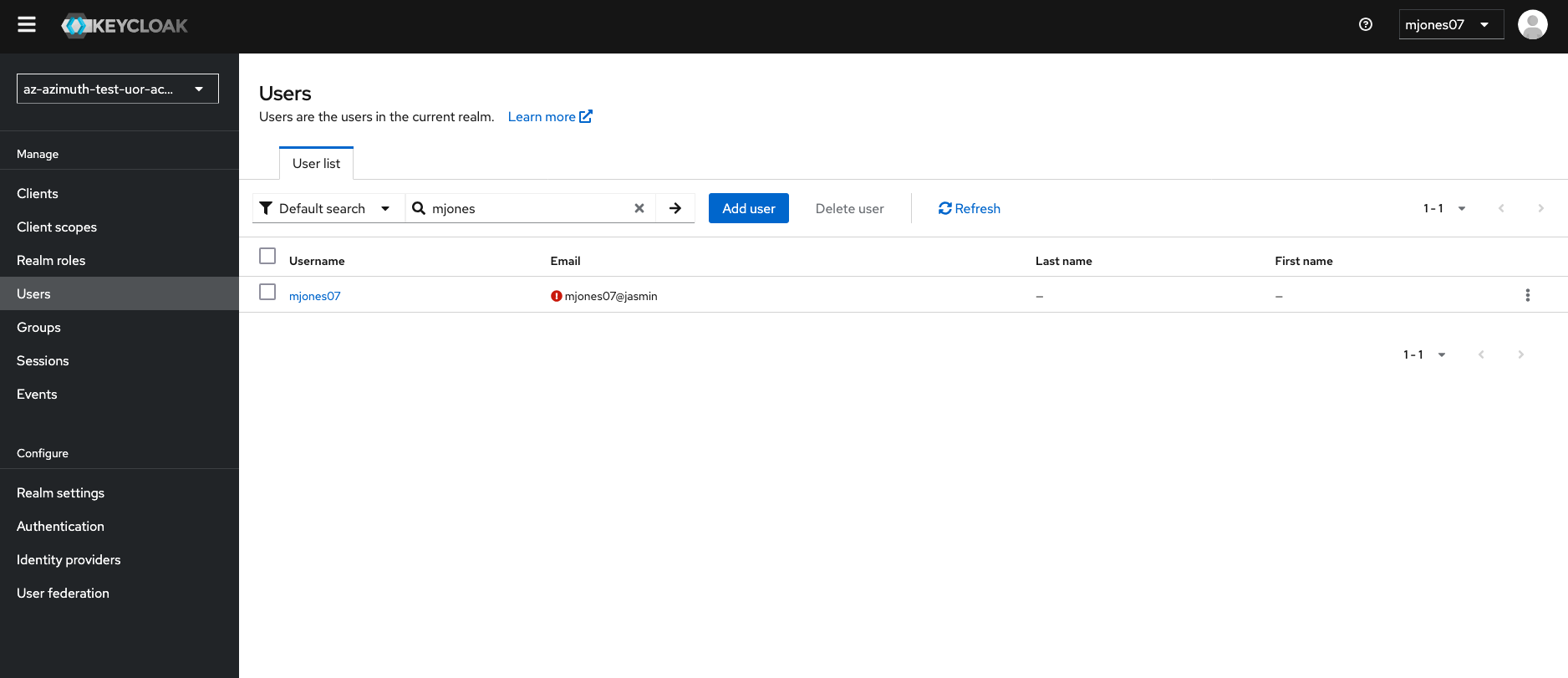
You can then add Username, and any other fields. Its advised that the Update Password Required user action is selected so that users must change their password before logging in.
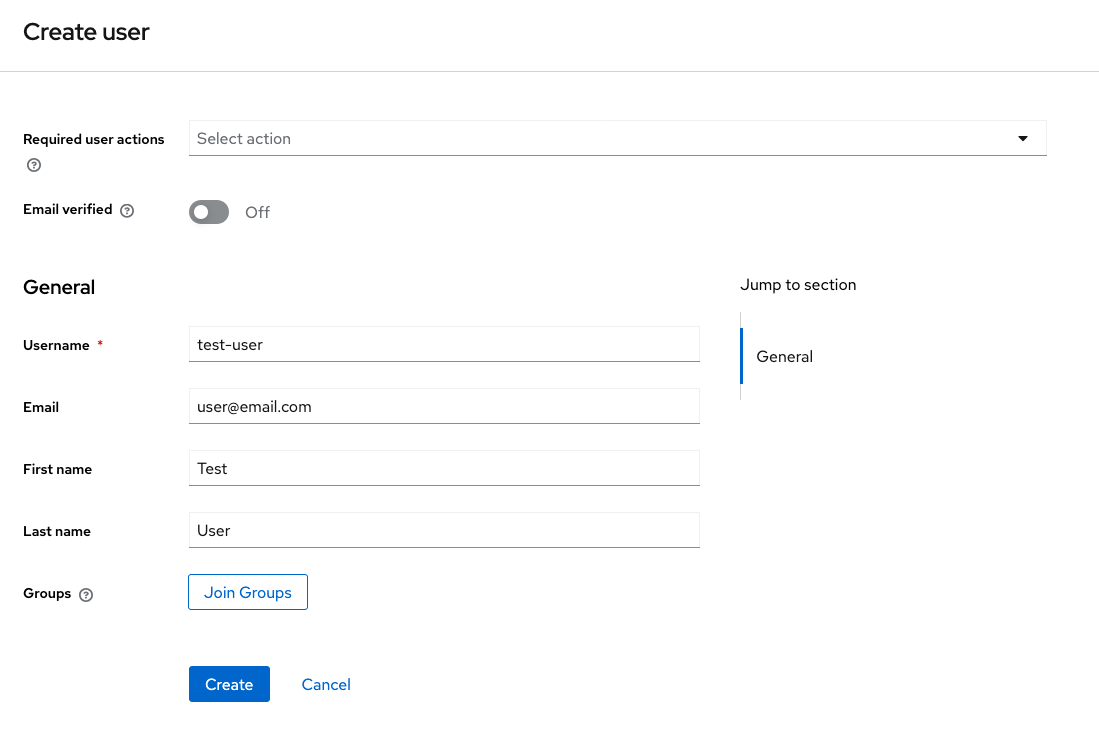
Before clicking create (you can go back to this if you edit the user), users can be added to any groups. These groups give access to the deployed platforms in Azimuth. For example below, the kubeapp-jhub group is a JupyterHub platform with the name jhub. Other created platforms with appear in this list once created with the format kubeapp-<platformname>. To add a user to all deployed platforms (that can be managed through this), add the user to the platform-users group. Users who need access as a Keycloak admin can be added to the admins group.
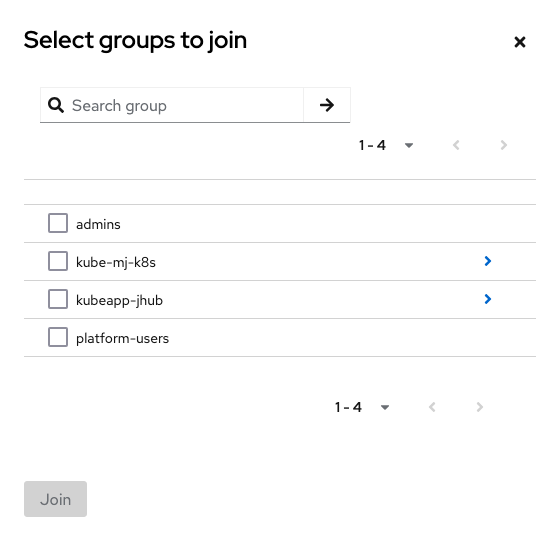
In order to sign in, a user needs to be given a temporary password. This can be done by going to the detail of the user, navigating to the Credentials tab, and clicking Set password. If the Update Password action was chosen during setup, then the user will be forced to change their password when they first log in.
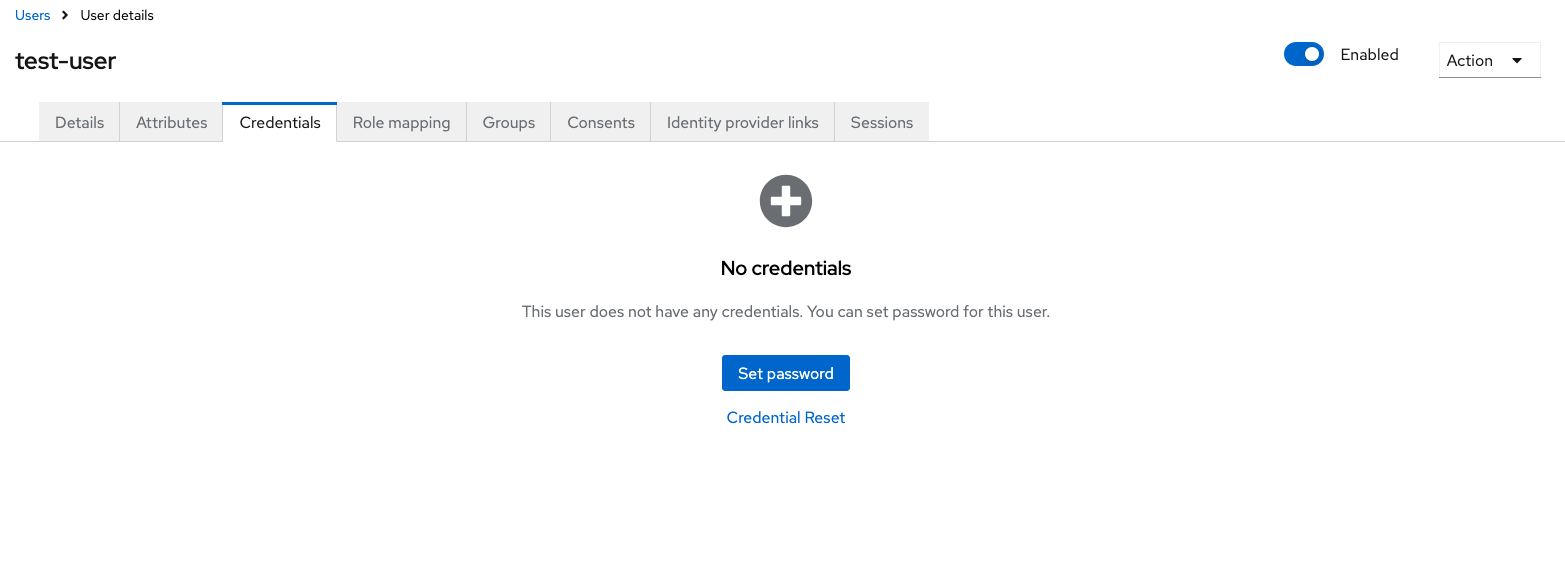
For more information, see the Keycloak documentation on:
- Managing users
- Assigning users to groups
- Configuring authentication policies - e.g. password requirements, multi-factor authentication
- Integrating external identity providers